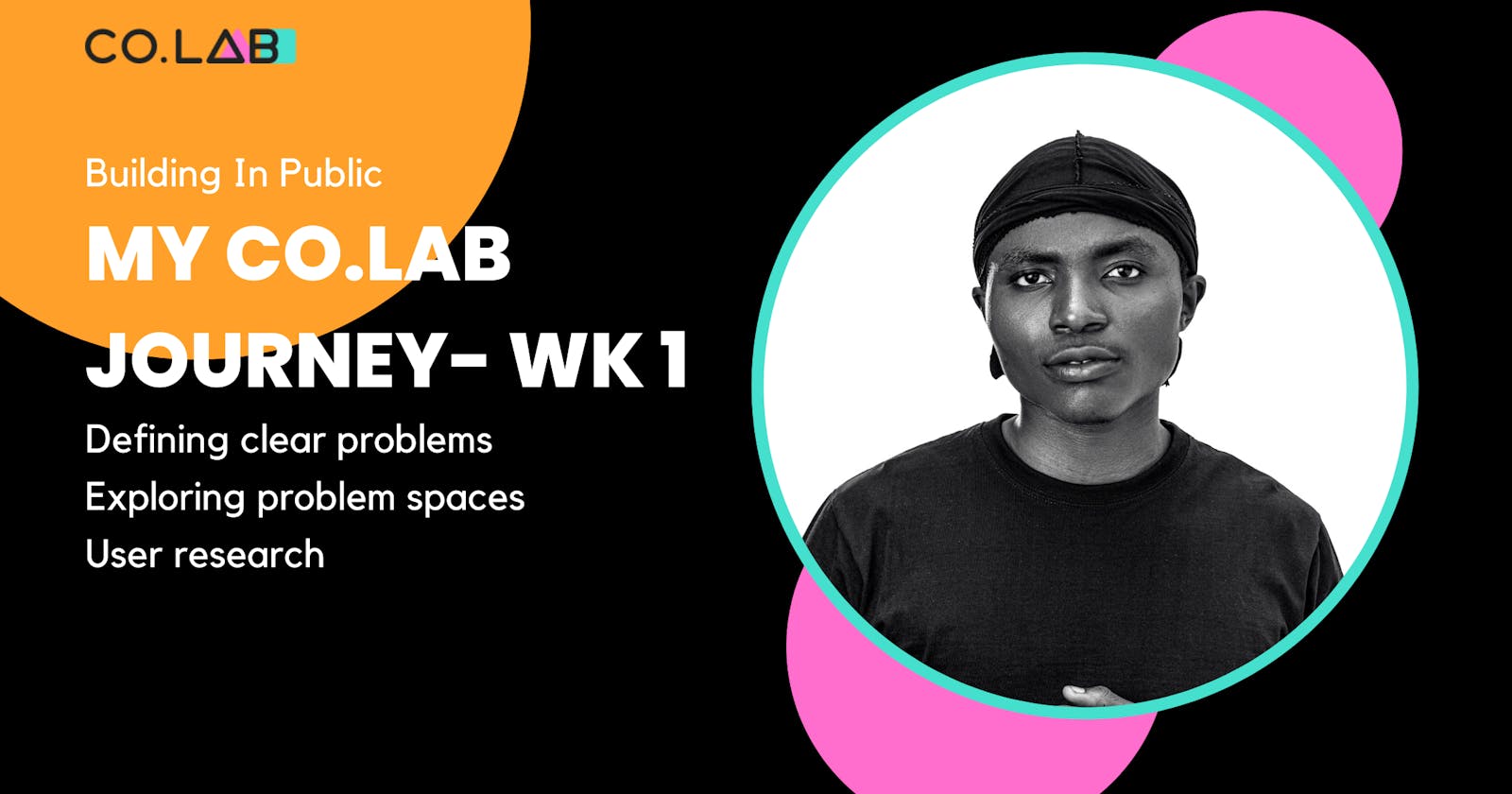WHAT DID YOU LEARN:
I learned how to define a clear problem, by clear problem I mean—Identifying valuable customer problems. I also learned how to use the Jobs-to-be-done framework to identify these problems
SO HOW DO YOU DEFINE A CLEAR PROBLEM?
I will start with this quote: The things people do, don’t change. but the way they do them changes.
So when exploring a problem space to provide a solution for—Look for age-old jobs that then problem new solutions for these jobs.
For Example, What Uber did with transportation, we always wanted to move from point A to B, uber just made it easier.
There is a formula I deduced, called the PROBLEM SPACE FORMULA
PROBLEM SPACE = AGE OLD JOBS + NEW SOLUTIONS
BUT HOW DO YOU PROVIDE THESE SOLUTIONS AFTER IDENTIFYING THE PROBLEM
- Take out the steps— In the Uber Example, You can just book a ride on your app with few clicks.
- Make it possible for more people—The Medium Example, Medium made blogging more accessible for more people, you don’t need the traditional hosting service and domain name to start writing, Just sign-up on medium and start your writing journey.
- Make it possible in more situations—The stripe example with online payments, you can shop online, send money to someone and receive money faster than the traditional bank.
USING THE JOBS-TO-BE DONE FRAMEWORK TO DEFINE PROBLEM SPACES AND SOLUTION
In simple terms, JOBS-TO-BE-DONE is an approach to gathering an Understanding of who your user is, and what their motivations and hopes are. It lets you focus on making things people actually want when you’re solving needs that already exist. You don’t need to convince people they need your product.
WHAT IS A JOB
A job is the occurrence of an unfulfilled need or wants in response to a trigger. A job is always triggered by a need or want or the outcome your user want to achieve.
TYPES OF JOBS-TO-BE-DONE
There are 3 types of JOBS-TO-BE-DONE
- Functional
- Emotional
- Circumstantial
Functional JTBD
This is very utilitarian, like transportation.
E.g You want to move from point A to B by 6’o clock.
Emotional JTBD
Here you are either doing something to seek pleasure or avoid pain. It can be Personal or Social.
Personal—You want to feel good about yourself(pleasure), so you go to the gym to work out.
Social: How do you want others to perceive you?—So you wear expensive brands or do plastic surgery.
Circumstantial JTBD
The thing needs to happen for a circumstantial JTBD to take place. There must be a cause to its effect.
E.g: Generators in 3rd world countries solve a circumstantial JTBD because there is no constant power supply.
TIP: When using the JTBD framework think in terms of PAIN KILLERS VS VITAMINS—The problem am solving is it an absolute necessity(pain killers) or a “nice to have” (vitamins).
WHY DO YOU USE JTBD
- To understand what causes people to ‘hire’ a particular product.
- To Understand what people want in a specific market
- To Improve the focus on solving the most important problem
- To create a compelling User Experience.
EXERCISE—WHAT JTBD DO TESLA AS A COMPANY SOLVE TODAY
- Functional JTBD
Tesla solves transportation, It is a car company and you use a car to move from point A to B
- Social JTBD
There is the social aspect because by using a tesla you are reducing your carbon footprint and making the planet more healthy.
It is also a luxury type car, it solves the social job of wanting status and being tech savvy since tesla is also high tech.
USER RESEARCH
Now you know the problem you want to solve. How do you actually learn about the users you are solving the problem for, and how to solve their problem more effectively—This is why you need to do user research.
GETTING STARTED WITH JTBD
- Identify a Customer: Find the customers that experience the problem you are trying to solve.
- Come up with a research plan: Here you come up with the plan on how you will get the insights and information you are looking for about your users.
- Learn about their problems: Do the research, and learn about your customer's problems. Remember a very well-defined problem already have hints of the solution.
- Collect insights
- Focus on one Job
WHAT IS USER RESEARCH THEN
The process of gathering observations to inform product decisions through a methodical analysis of people’s motivation, behaviors, needs, and pain points.
User research answers two questions:
- What problem are we solving for users?
- Does the solution meet the user's need
I also learn how to use the 5W1H framework and the Mom test Rules to do user research.
